Root binding is a common issue many houseplant owners face, especially when it comes to snake plants. If your beloved plant’s roots have outgrown its current container, you may be asking yourself: Do snake plants like to be root bound?
The answer is both yes and no! It all depends on what stage of growth the plant is in—some stages require more space for the roots than others. That’s why I’m here to provide you with an expert guide on repotting your snake plant so that it can continue to thrive in any environment.
Whether you’re new to caring for houseplants or a seasoned pro looking to brush up on their knowledge, this article will equip you with the information needed to ensure repotting goes smoothly. So let’s get started and dive into how we can take our understanding of whether snake plants like being root bound to the next level!
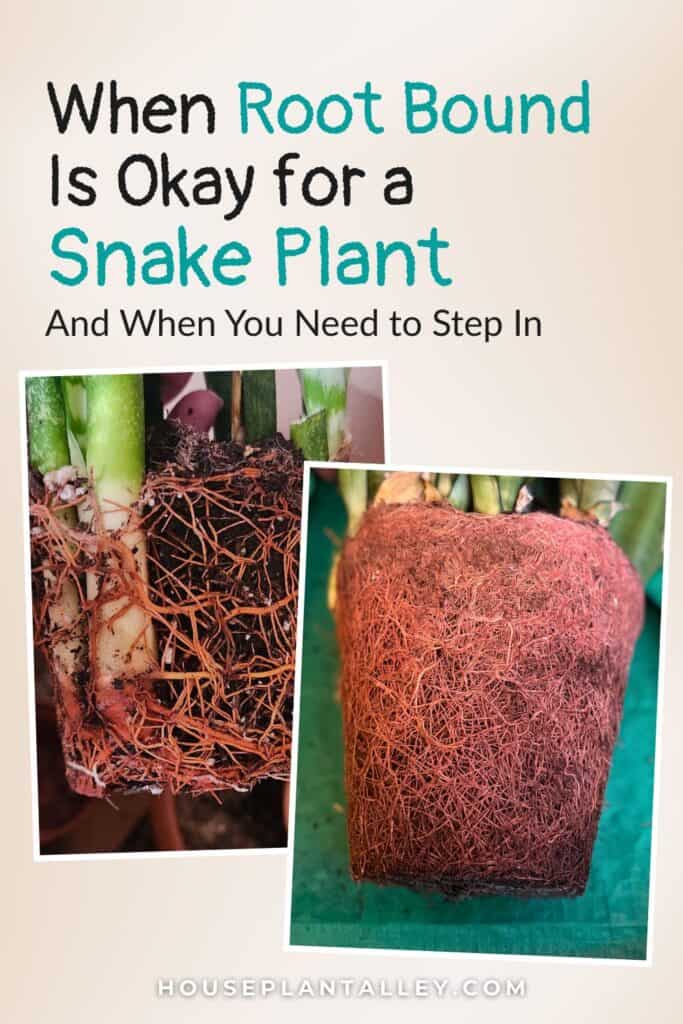
Contents
- 1 Do Snake Plants Have Large Root Systems?
- 2 How To Tell If Snake Plant Is Root Bound?
- 3 Do Snake Plants Like To Be Root Bound?
- 4 What To Do If Snake Plant Is Root Bound?
- 5 What Happens If I Don’t Repot My Snake Plant?
- 6 How To Repot Snake Plants
- 7 How Deep Should I Plant My Snake Plant?
- 8 Do Snake Plants Like Cramped Pots?
- 9 Conclusion
Do Snake Plants Have Large Root Systems?
The short answer is no, snake plants don’t have large root systems. While the roots of a snake plant can extend a few inches into the soil, they are generally shallow and fibrous. The roots are designed to absorb moisture and nutrients from the soil quickly, and they are capable of surviving in both dry and wet soil conditions. They don’t need much space to grow, so they don’t spread out very far.
As far as the root structure goes, the roots are thin and wiry and they branch out from the base of the plant. They are typically white or pale brown in color and have a few small root hairs along their length.

Snake plants typically take a long time to become root bound due to their small root systems. In ideal conditions, it can take up to a year or more before the root system becomes so large that it needs to be repotted.
How To Tell If Snake Plant Is Root Bound?
Root bound plants can be tricky to identify, but there are some telltale signs:
1. Roots visible on soil surface
When the snake plant has been in the same pot for a while, its roots can start to grow out of the drainage holes at the bottom of the pot or even start to appear on the soil surface.
2. Slow growth
If you notice that your snake plant isn’t growing as quickly as it used to, this could be a sign that it’s root bound. The roots may have run out of room to grow, and as a result, the plant is not able to absorb as many nutrients as it needs to thrive.
3. Yellowing leaves
If the leaves of your snake plant are turning yellow, it could be a sign of root bound. When the roots of the plant don’t have enough space to grow, they may start to become congested and compacted, which can lead to reduced nutrient uptake and yellowing of the leaves.
4. Dry soil
When the roots of your snake plant have taken up all the available space in the pot, they may not be able to absorb water as efficiently as they used to. This can lead to the soil drying out more quickly, even if you’re watering the plant regularly.
5. Pot bursting
If your snake plant is seriously root bound, you may start to see cracks appearing in the pot. This is a sign that the roots have grown so much that they’re putting pressure on the sides of the pot, causing it to break or crack.
Do Snake Plants Like To Be Root Bound?
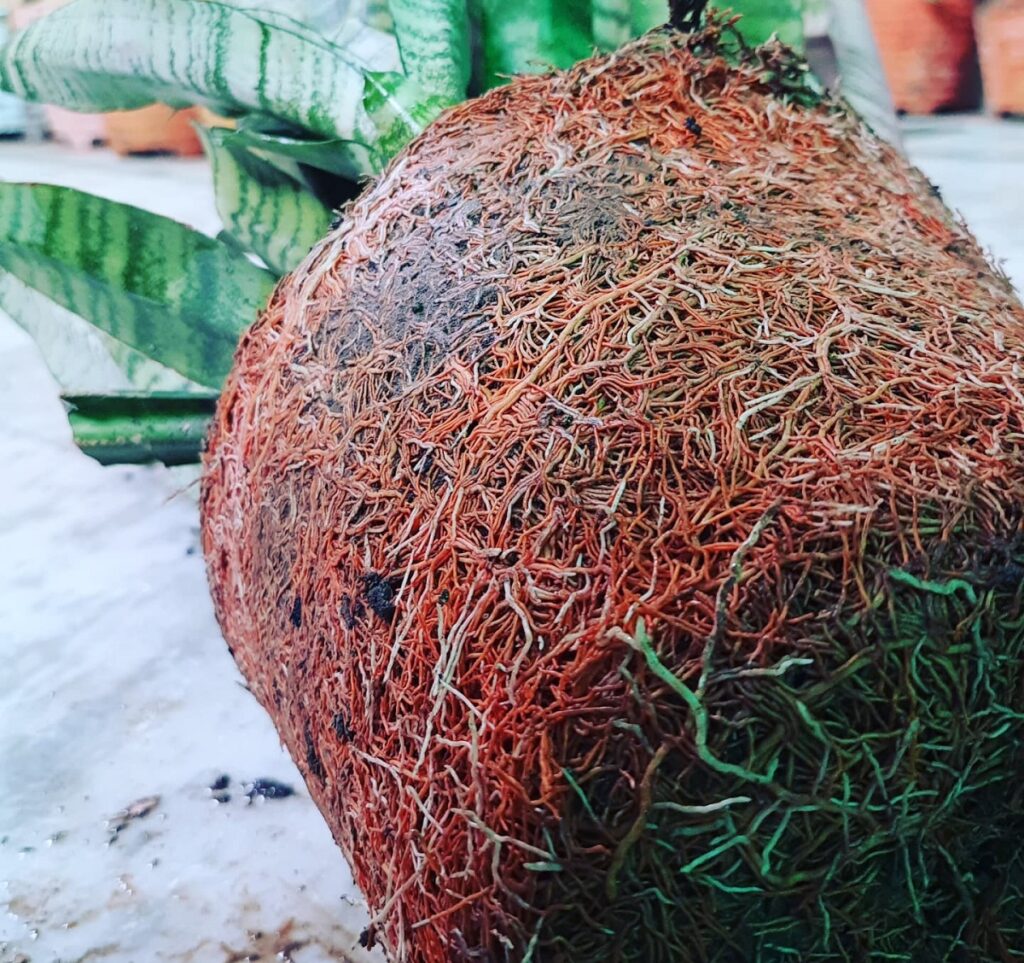
It’s a common question: do snake plants like to be root bound? Generally speaking, snake plants do not like to be root bound. While they can survive in cramped pots, they do not like to be left in containers that are too small for them for too long.
When a snake plant is root bound, its roots are unable to spread out and absorb water and nutrients effectively, causing it to become stressed and eventually die. Additionally, being root bound also limits the amount of soil in which the roots can grow, resulting in stunted growth and an unhealthy plant. For these reasons, it is best to repot your snake plant at least once a year, or whenever the roots become crowded in their container.
What To Do If Snake Plant Is Root Bound?
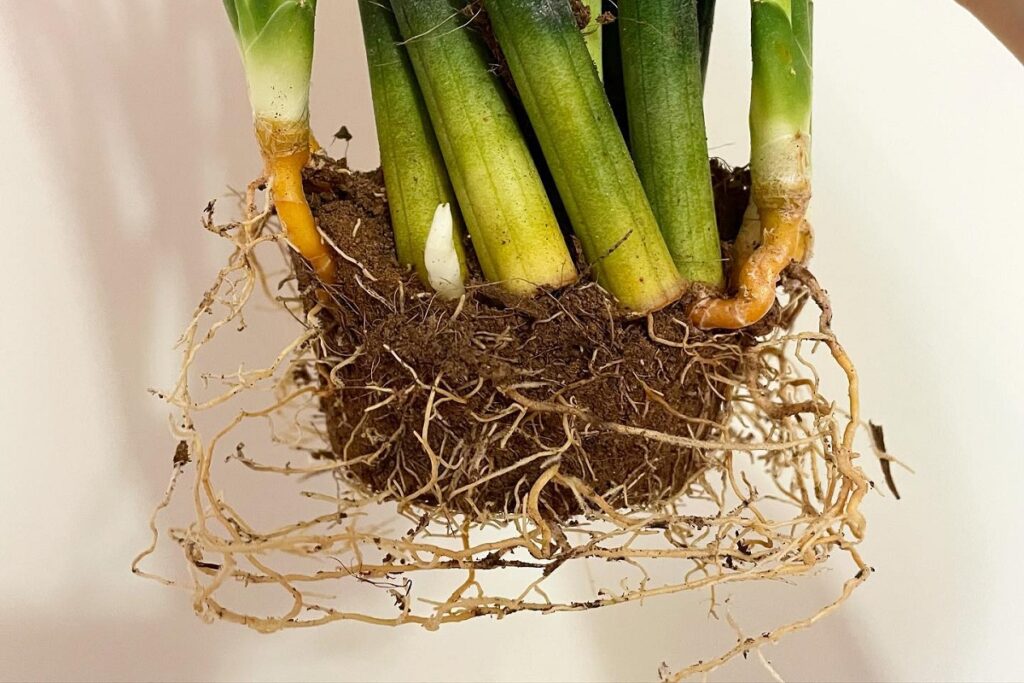
If your snake plant is root bound, it means that the roots have filled up much of the soil mass in its current pot and can no longer expand. In this case, it’s time to give your plant some extra space by repotting it into a larger container with fresh potting mix. This will provide enough room for the roots to grow properly and keep them healthy.
What Happens If I Don’t Repot My Snake Plant?
If you don’t repot your snake plant even though it is root bound, it will unlikely continue to grow and thrive. Its roots will become congested, unable to absorb enough moisture and nutrients, and the plant will likely dry out and eventually die. The plant will start to show signs of distress, such as yellowing leaves, wilting, and stunted growth.
Root bound plants will also be more prone to disease and pests, as the lack of space can create the perfect environment for them to thrive. The soil will become compacted and water-logged, causing root rot and fungal problems. In addition, the roots could start to grow out of the bottom of the pot, creating a tangled mess.
It’s important to repot your snake plant as soon as you notice it is root bound. This will help ensure that your plant continues to grow and thrive.
How To Repot Snake Plants
Now that you know what happens if you don’t repot your snake plant, it’s time to discuss how best to do so. Repotting a snake plant is an easy process—but there are some key tips to make sure the transition goes smoothly and the plant stays healthy.
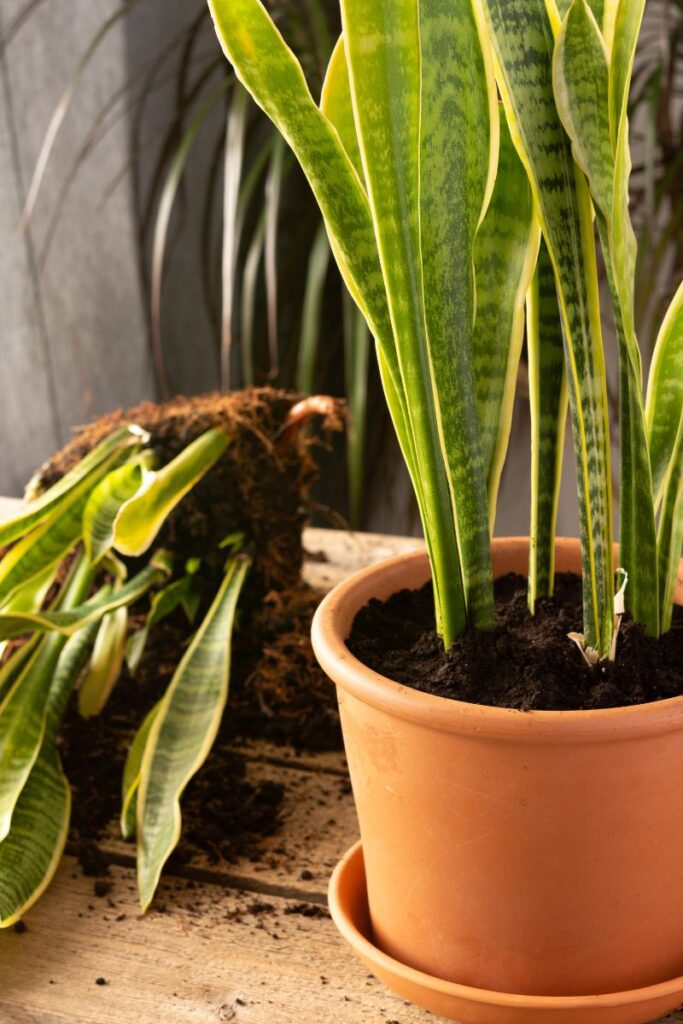
First, consider the new pot size for your indoor plant. If the root system has become severely root-bound—meaning the roots have filled up much of the container’s space as they grow—then it may be necessary to move into a much larger pot. Choose one with drainage holes at the bottom and select a material that will hold moisture well; terracotta or ceramic pots work great for this purpose.
Next, prepare the soil mix for your snake plant before transplanting it out of its current pot. A good starting point would be to use a combination of one part regular potting soil mixed with one part perlite or coarse sand (to ensure better water drainage). You can also add peat moss or composted bark/wood chips in order to improve aeration in heavier soils like clay. Finally, choose an area with plenty of light—although snake plants prefer bright indirect sunlight, they can tolerate lower light conditions too.
Once everything is prepared, remove your snake plant from its old pot by gently squeezing around the edges until it loosens enough that you can pull it out without damaging any roots. Carefully tease the rootball to loosen any tightly packed roots. Then, place it into its new home and fill in the surrounding areas with fresh soil mix until evenly covered.
Water thoroughly after planting and place in the desired location where temperature and humidity levels stay consistent throughout day/night cycles—ideally between 65°F – 85°F (18°C – 29°C) with 40% – 50% relative humidity range being optimal for growth. With these simple steps, you’ll have successfully repotted your snake plant!
How Deep Should I Plant My Snake Plant?
When planting your snake plant, you want to make sure it’s planted at the right depth. A good rule of thumb is to make sure that the top of the root ball is level with the surface of the soil. You don’t want to plant it too deeply or too shallowly, as both can lead to potential problems with the health of your plant.
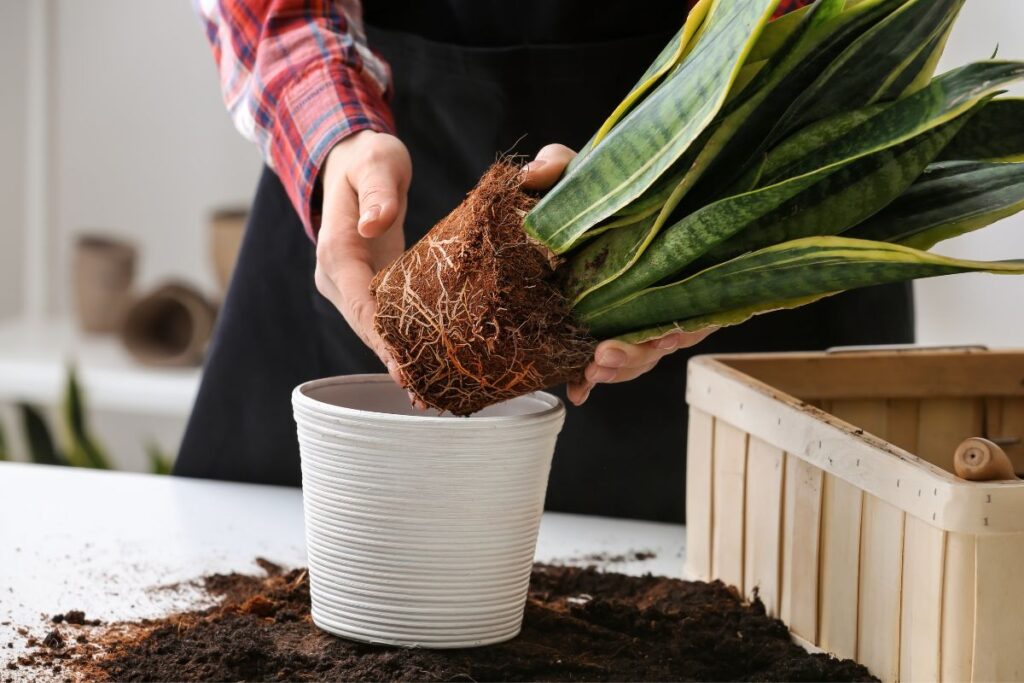
If planted too deeply, the roots may not be able to spread out and absorb enough nutrients from the soil. This can cause the plant to become rootbound quickly in its new pot and lead to stunted growth, as well as other health issues
On the other hand, planting it too shallowly can make the plant unstable and more prone to tipping over. Depth affects the amount of water and nutrients the plant is able to absorb, so you want to make sure you plant it deep enough for the roots to reach the soil but not so deep that the plant is deprived of oxygen. Planting your snake plant at the right depth will also help promote healthy growth by allowing the roots to spread as the plant matures.
Do Snake Plants Like Cramped Pots?
No, snake plants generally don’t like cramped pots. If you notice the roots of your snake plant on the surface or overflowing from the pot’s drainage holes, it is a telltale sign that it has become root bound and needs to be repotted into a larger container. It is important to have the right size pot for your indoor garden plant as having too small of a container can result in stunted growth.
If you’re concerned about how often your should repot your snake plant, then consider its rate of growth. When they are actively growing, these plants need more room so they can expand their root system and absorb nutrients effectively. An overcrowded pot will cause stress on your plant because there won’t be enough space available for healthy development. Therefore, keeping an eye out for signs of being root-bound and providing adequate space with timely repotting is essential for the successful cultivation of this popular houseplant.
Conclusion
As you have seen, snake plants don’t require a lot of care and attention. They have small root systems and don’t need to be repotted often. However, it is important that you check your snake plant periodically for signs of being root bound so that you can take the necessary steps to keep them healthy.
If you do find that your snake plant has become root bound, there are several things that you can do to give it more room in its pot. You can simply move up one size or two sizes larger when repotting, or you can divide the plant into multiple pots depending on how large the root ball is. Make sure you use fresh soil with good drainage when repotting your snake plants as this will help ensure their health going forward.
Overall, learning how to properly care for a snake plant is not difficult but does require some knowledge about what makes them thrive best. If done correctly, snake plants make excellent houseplants due to their hardy nature and ease of care!
